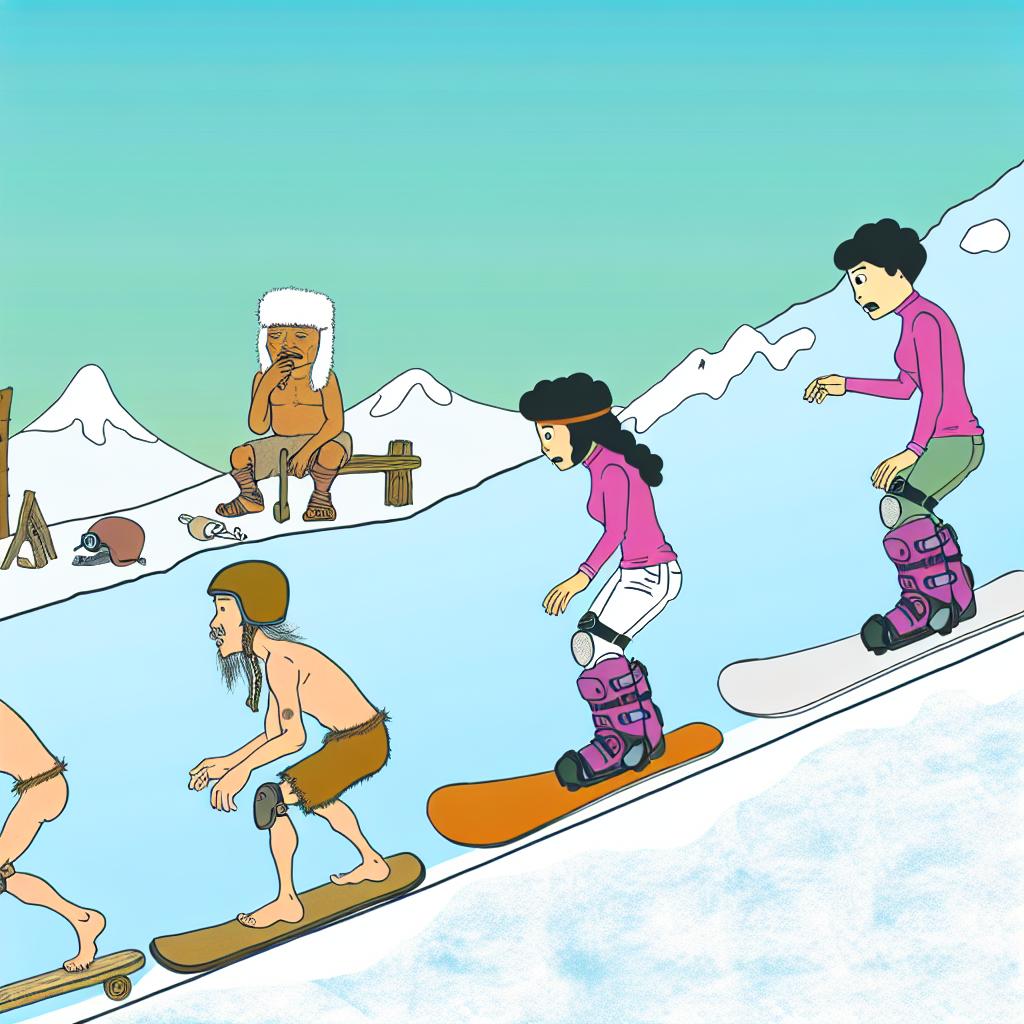Introduction to Snowboarding
Snowboarding is a winter sport that has drastically transformed since its early inception. What started as a niche activity inspired by surfing and skateboarding has developed into a mainstream Olympic sport with its own unique equipment, techniques, and cultural influences. In this article, we will delve into the fascinating progression of snowboarding from its origins to the present day.
The Origins of Snowboarding
The journey of snowboarding began in the 1960s, during a time when creativity and experimentation in sports were blossoming. The sport was initially inspired by surfing and skateboarding, with enthusiasts eager to translate their passion for these activities onto snow-covered slopes. One pivotal moment in this early phase was the creation of the “Snurfer,” conceived by Sherman Poppen in 1965. The Snurfer essentially combined elements of skiing and surfing, allowing riders to navigate snowy terrains in a manner similar to how surfers ride waves. This invention laid the groundwork for the modern snowboards we see today, marking the beginning of an exciting new sport.
Development and Commercialization
As the years progressed into the 1970s, snowboarding slowly began gaining momentum. Recognition of snowboarding as a legitimate sport started to grow, although acceptance was not immediate. The sport achieved a significant milestone in 1979 with the organization of the first official competition, the National Snurfing Championship in Michigan. This event provided a platform for snowboarding to be taken seriously and showcased the potential of the sport to a broader audience.
It was during this era that visionaries such as Jake Burton Carpenter and Tom Sims emerged, driven by their passion to elevate snowboarding to new heights. They worked tirelessly to refine board designs, experimenting with various materials and shapes. Their innovations led to the production of snowboards that were not only commercially viable but also highly efficient for performing on snow. The impact of these pioneers was profound, as they laid the foundations for the snowboard industry.
Moving into the 1980s, snowboarding began to intertwine with mainstream winter sports, albeit with some resistance. Early adopters introduced significant improvements to snowboard technology, such as high-back bindings and metal edges. These enhancements provided riders with better control and safety, making the sport more appealing and accessible. Slowly but surely, ski resorts started opening their slopes to snowboarders, marking a transitional phase towards widespread acceptance of the sport.
The Rise of Competitive Snowboarding
The landscape of snowboarding underwent a dramatic shift in the 1990s. The sport’s competitive aspect gained recognition and credibility when snowboarding made its debut at the 1998 Winter Olympics in Nagano, Japan, with giant slalom and halfpipe events included in the program. This momentous occasion drew significant international attention and inspired a new generation of snowboarders.
During this era, professional snowboarders began to rise to prominence, becoming household names and role models for aspiring athletes. Prestigious competitions like the X Games provided a platform for showcasing the extreme, thrilling aspects of snowboarding. These events captivated audiences and helped integrate snowboarding into popular culture, influencing not only the sport’s technical evolution but also its aesthetic dimensions in terms of fashion and music.
Technological Advances
Technological advancements have played a critical role in shaping the evolution of snowboarding over the decades. One of the key transformations in snowboard design is the use of composite materials. Modern snowboards are constructed with lightweight, durable materials that enhance performance and make handling easier for riders.
Another significant innovation is the introduction of rocker profiles, which alter the curvature of the snowboard. Rocker profiles allow for faster, more fluid turns and improved floatation in powdery snow. These advancements have not only made snowboarding more beginner-friendly but also enabled the development of specialized snowboards tailored for different styles, whether it be freestyle maneuvers, freeride adventures, or alpine racing.
Snowboarding Today
In the present day, snowboarding stands as a globally recognized and cherished sport. It continues to evolve, with continuous innovation in techniques, equipment, and training methodologies. The snowboarding community remains vibrant and dynamic, characterized by its diversity and inclusive spirit.
A plethora of events and competitions are now held around the world, attracting participants from all skill levels, from beginners to seasoned professionals. Training programs are becoming increasingly sophisticated, helping aspiring snowboarders to hone their skills and prepare for competitive events. Furthermore, the sport enjoys a strong fanbase and cultural scene, further cementing its status as a significant contributor to winter sports.
For those interested in exploring snowboarding further, organizations such as the International Ski Federation (FIS) and the United States of America Snowboard and Freeski Association (USASA) offer valuable resources. These organizations provide updates on competitions, training resources, and detailed insights into the ever-evolving world of snowboarding, ensuring that enthusiasts stay informed and engaged with the latest developments in this exciting sport.
